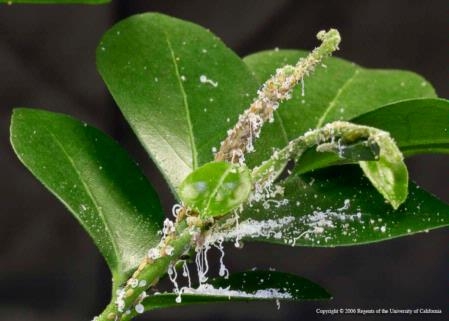Posts Tagged: Louise Jackson
Scientists examine California's vulnerability to climate change
The UC Davis research appears in a report, "Our Changing Climate," released today by the California Natural Resources Agency and the California Energy Commission. The report is the third assessment from the California Climate Change Center since 2006.
UC Davis scientists authored nine of the 35 studies contained in the report. The UC Davis work addresses climate change impacts on native fishes, agriculture, urban planning, water management and other issues:
* Peter Moyle, a wildlife, fish and conservation biology professor in the UC Davis Center for Watershed Sciences, studied the predicted effects of climate change on native fishes. His team found that most native fishes will suffer population declines, and some will likely go extinct. Fishes requiring cold water are particularly vulnerable.
Meanwhile, non-native fishes are expected to increase, although they will also experience habitat loss during severe droughts.
"California's unique native fishes are already in steep decline, and climate change is making the situation worse," Moyle said. "This is likely to increase the complexity of managing California's water supply. Preventing predictable extinctions is possible but will require planning now for increased water temperatures and more variable flows."
* James Thorne, a researcher in the Department of Environmental Science and Policy, helped create a model that simulates how rainfall interacts with the landscape. Thorne's research group looked at hydrologic data from the past and present to help predict what may happen in the future. That model was used for other studies in the report, such as those regarding fire and agriculture, allowing cross comparisons among the researchers' work.
Thorne also looked at six different policy options for urban growth, including smart-growth, infill and "business as usual" approaches.
"If we want the most lands preserved for a variety of different purposes -- agricultural and biodiversity protection, reduced fire threats -- the infill policy was best," Thorne said.
* Studies by Louise Jackson, UC Cooperative Extension specialist and professor in the Department of Land, Air and Water Resources at UC Davis, complemented Thorne's growth policy conclusion. Her group's case study focused on greenhouse gas emission mitigation and adaptation to climate change in Yolo County. They found that "channeling much or all future urban development into existing urban areas" will help preserve agricultural land and open space, reduce Yolo County's greenhouse gas emissions and enhance agricultural sustainability. Their research also found that farmers concerned about climate change were more likely to voluntarily adopt practices that would conserve water and reduce greenhouse gas emissions.
Jackson's group also developed an agricultural vulnerability index for California that identified four areas as especially vulnerable to the effects of climate change: the Sacramento-San Joaquin Delta; Salinas Valley; the corridor between Merced and Fresno; and the Imperial Valley.
* Jay Lund, director of the UC Davis Center for Watershed Sciences, examined climate change adaptations for managing water in the San Francisco Bay Area. His group's research suggests that Bay Area urban water demands can be largely met even under severe forms of climate change, but at a cost. The cost includes buying water from agricultural users, using more expensive alternatives such as water recycling and desalination, and some increased water scarcity. A shared connection of public water systems, or interties, recently completed for emergency response, greatly aids adaptation, the study reports.
* Joshua Viers, associate director of the Center for Watershed Sciences, co-authored a study analyzing "water year" classifications.
These indices determine whether a year is considered wet, dry or in-between, as well as how much water is allocated and who gets it.
"Unfortunately, the method to distinguish different water year types is indexed to historical climatic conditions and is intended to represent an equal chance for any given year," said Viers. "Our science suggests that future climatic conditions are not likely to represent this history, and thus water management agencies may need to reconsider these arbitrary indexing thresholds going forward to achieve a more equitable situation."
Viers also co-authored a study about climate change's impact on hydropower production in the Sierra Nevada. It found that an 11 F increase in air temperature would reduce hydropower in the area by about 10 percent, and that most reductions would occur in the northern Sierra Nevada. The central Sierra Nevada would adapt better to changes in runoff, while hydropower generation in the southern watershed would decrease.
Other institutions, including UC Berkeley, UC Santa Cruz, Stanford, the Scripps Institution of Oceanography, and Lawrence Berkeley National Laboratory researched climate change impacts on electricity consumption, sea level, wildfires and coastal flooding.
This assessment will provide a foundation for the state's 2012 Climate Adaptation Strategy, with completion expected in December 2012. Comprised of scientific studies from several academic institutions, the assessment is directed by the Governor's Office and intended to help state and local communities protect public health, grow the state's economy, ensure energy reliability and safeguard the environment.
Natural enemy of Asian citrus psyllid coming soon to SoCal
At a Nov. 16 research symposium in Oxnard, hosted by the University of California Cooperative Extension and Hansen Agricultural Center, UC Riverside entomologist Mark Hoddle said that he had completed the testing required to secure federal approval for release of a tiny wasp that preys on ACP, reported John Krist in the Ventura County Star.
The federal government has promised to expedite approval, the article said. Some of the natural enemies - collected in the Punjab, Pakistan - could be carrying the fight against ACP into Los Angeles yards by the end of the year.
Hoddle also said a citrus variety he observed being grown in the Punjab appears able to survive and produce fruit despite the presence of ACP and HLB.
Drought and rising temperatures will challenge California's farmers, experts say
By Suzanne Bohan, Contra Costa Times
In the past century, the state's winter lows have warmed by 2 degrees Fahrenheit, "a significant increase," Dan Sumner, director of the Agricultural Issues Center, told a forum last week. Although that warming trend hasn't yet disrupted crops, it is accelerating, he said. "There's potential for complete crop failure, especially cherries, apricots and other stone fruit," said Louise Jackson, a UC Davis researcher. As an example, Sumner said that as winters heat up, peach growers in the warmer southern San Joaquin Valley may have to move northward, where it's cooler. With California's diversity of crops and different microclimates, the agricultural system has a natural resiliency, although Sumner said now is the time to begin researching ways to best cope with anticipated changes. "I think the risk is we don't take it seriously enough," Sumner said. "The lesson here is you have to have enough research and development to adapt and be flexible. And I don't think we're doing enough."
Health hazards similar in San Joaquin, Coachella valleys
Marcel Honoré, The Desert Sun
A new study on the the environmental health risks across Central California describes conditions strikingly similar to those confronting many eastern Coachella Valley residents. More than 1 million people living in the sprawling San Joaquin Valley face serious health risks from toxic air, polluted water and other environmental factors, according to a University of California, Davis, report published earlier this month.
Food chain holds promise
Doug Ford, The (Vacaville) Reporter
The Solano and Yolo County Joint Economic Summit on agriculture, held at the University of California, Davis, Alumni Center, noted that the area boasts some of the best land and water resources in the world and is ideally located between the populous San Francisco Bay Area and the state capital, with an excellent transportation infrastructure connecting us with world markets. The local "food chain industry," the article said, contributes about 10 percent of the gross domestic product of the area, and its products added up to about $2.5 billion in 2009.
Bravo Lake garden keeps local youths out of trouble
David Castellon, Visalia Times-Delta
Manuel Jimenez and his wife, Olga, spent Black Friday at the Bravo Lake Botanical Garden — the 13-acre public garden and walking trail they helped create about eight years ago — along with a group of teenage boys who volunteered to help.
“The garden is not our goal,” said Jimenez, 61, a University of California Cooperative Extension farm advisor. “Our goal is to grow kids. Our goal is to make something of them.”


